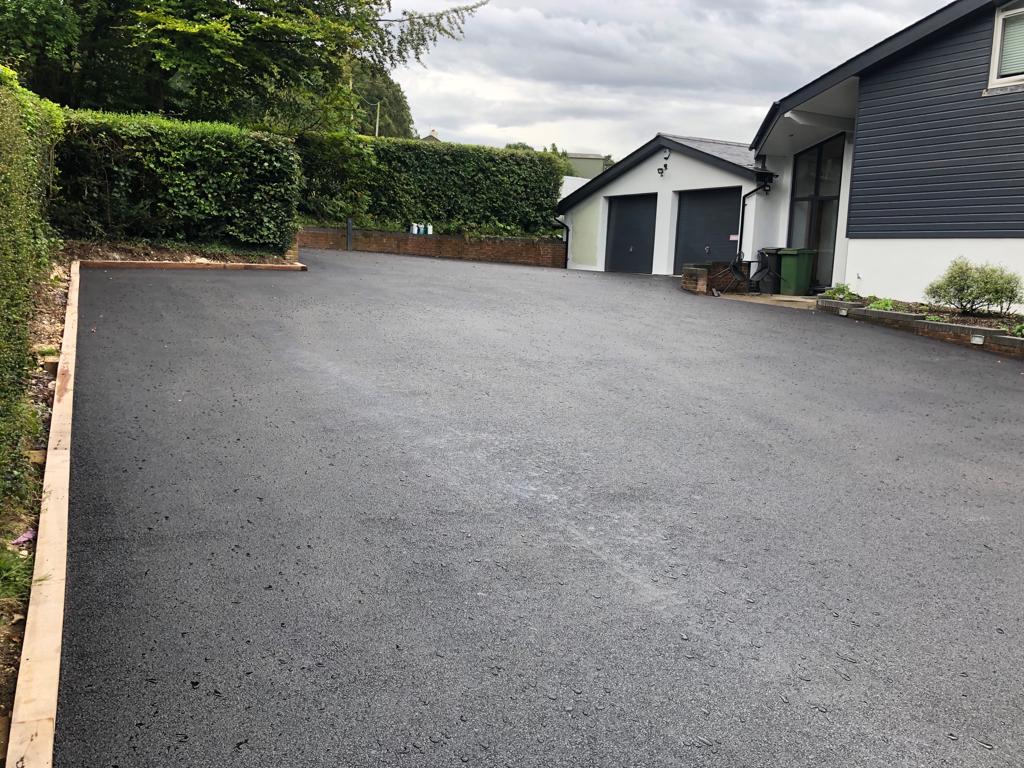Whether you’re managing a logistics yard, agricultural operation, industrial depot or construction site, a well-built hardstand is essential for supporting heavy equipment. In Toowoomba, QLD, where machinery like excavators, trucks, and farm vehicles are part of daily operations, it’s vital that hardstands are engineered to handle constant load pressure without failing.
At Toowoomba Asphalt & Bitumen Surfacing, we work closely with clients to design, construct and reinforce hardstands tailored for long-term heavy-duty use. In this article, we outline the best practices for reinforcing hardstands to ensure they remain safe, stable, and structurally sound—no matter the load.
What Is a Reinforced Hardstand?
A reinforced hardstand is a purpose-built surface designed to bear the repeated weight of heavy vehicles, plant equipment, or bulk materials without subsiding, cracking, or deforming. It differs from standard paving by having a deeper, more robust base and often additional structural support such as geotextiles, concrete overlays, or stabilised sub-layers.
Proper reinforcement ensures that your investment remains functional and low-maintenance for years to come.
Key Steps to Reinforcing a Hardstand for Heavy Equipment
1. Conduct a Soil Assessment
The first step in any hardstand project is understanding the existing ground conditions. Soil type, moisture retention, and compaction characteristics directly affect the structural integrity of the surface.
What to assess:
- Load-bearing capacity of native soil
- Drainage characteristics and water table levels
- Need for soil stabilisation or replacement
In Toowoomba’s variable soil conditions, site-specific analysis helps determine the level of reinforcement required. At Toowoomba Asphalt & Bitumen Surfacing, we ensure each site is assessed thoroughly before any surface is laid.
2. Prepare a Deep and Well-Compacted Base
For heavy equipment, the base is everything. A shallow or poorly compacted base will fail under pressure, causing surface deformation, rutting, and cracking. The thickness of the base should be proportionate to the load it’s expected to carry.
Recommended base structure:
- 150mm–300mm compacted crushed rock or gravel (adjusted to expected loads)
- Multiple compaction layers using vibrating rollers
- Geofabric or separation layer to prevent subgrade contamination
This strong foundation distributes weight evenly, preventing localised stress points beneath the hardstand.
3. Incorporate Soil Stabilisation or Subgrade Improvement
In cases where the existing soil is weak or moisture-prone, further reinforcement is needed at subgrade level. This could include the use of stabilising agents such as lime or cement, or installing a reinforced geogrid to enhance load distribution.
Techniques include:
- Lime/cement stabilisation of clay-heavy soils
- Use of geogrids for additional strength and flexibility
- Excavation and replacement of unsuitable material
These methods are especially effective in areas with high rainfall or frequent water ingress, common in parts of Toowoomba and its surrounds.
4. Choose the Right Surfacing Material
Asphalt and bitumen are both suitable for hardstand surfacing, but the final choice should reflect the expected load frequency, turning movements, and long-term maintenance requirements.
Asphalt:
- Strong, flexible surface that absorbs pressure and movement
- Quick installation and curing times
- Ideal for medium to heavy-duty commercial use
Bitumen Spray Seal:
- Suitable for lighter industrial applications
- Cost-effective for large areas
- Requires a well-prepared and compacted base
For heavy equipment use, asphalt is generally the preferred choice due to its thicker application and resilience under dynamic loads.
5. Ensure Effective Drainage Design
Water is one of the biggest threats to the longevity of a hardstand. If water is allowed to pool on or beneath the surface, it can lead to erosion, base weakening, and premature failure.
Drainage essentials:
- Sufficient surface grading or camber for runoff
- Spoon drains or kerbside channels
- Subsurface drainage where necessary (e.g. agi pipe and gravel trench)
At Toowoomba Asphalt & Bitumen Surfacing, we design drainage systems that suit the local climate and site layout to protect the structural layers from water-related issues.
6. Consider Load-Specific Reinforcements
Some applications may require additional structural elements to support exceptional loads, such as:
- Concrete pads at load points or equipment bases
- Steel-reinforced edge restraints to prevent cracking at transitions
- High-strength asphalt layers using modified binders or additives
These solutions are best implemented in areas with repetitive stress, such as crane pads, loading zones, or high-turn traffic areas.
Why It Matters
Without proper reinforcement, hardstands can deteriorate quickly under the stress of heavy equipment—leading to costly repairs, downtime, and safety risks. By investing in the right construction methods from the outset, you ensure the area remains fit for purpose over its full intended lifespan.
Why Choose Toowoomba Asphalt & Bitumen Surfacing?
With a deep understanding of local conditions, soil types, and heavy-use requirements in Toowoomba, QLD, our team delivers reinforced hardstand solutions that are built to last. We handle every phase of construction—from assessment and base preparation to final surfacing and drainage—with a focus on strength, safety, and service.
Whether you’re running a rural depot, commercial yard, or industrial facility, we provide high-performance results backed by quality workmanship and local knowledge.
Conclusion
Reinforcing a hardstand for heavy equipment requires more than just laying asphalt—it involves thoughtful design, proper base construction, drainage planning, and the right material selection. When done correctly, it offers long-term value, low maintenance, and the strength to support your operations day in and day out.
If you’re planning to build or upgrade a hardstand in Toowoomba, contact Toowoomba Asphalt & Bitumen Surfacing. Our team will assess your needs and deliver a reinforced surfacing solution designed for heavy equipment and harsh working conditions.
Call us on: 07 5241 4500
Click here to find out more about Toowoomba Asphalt & Bitumen Surfacing
Click here to complete our contact form and see how we can help with your Asphalt and Bitumen Surfacing needs.

